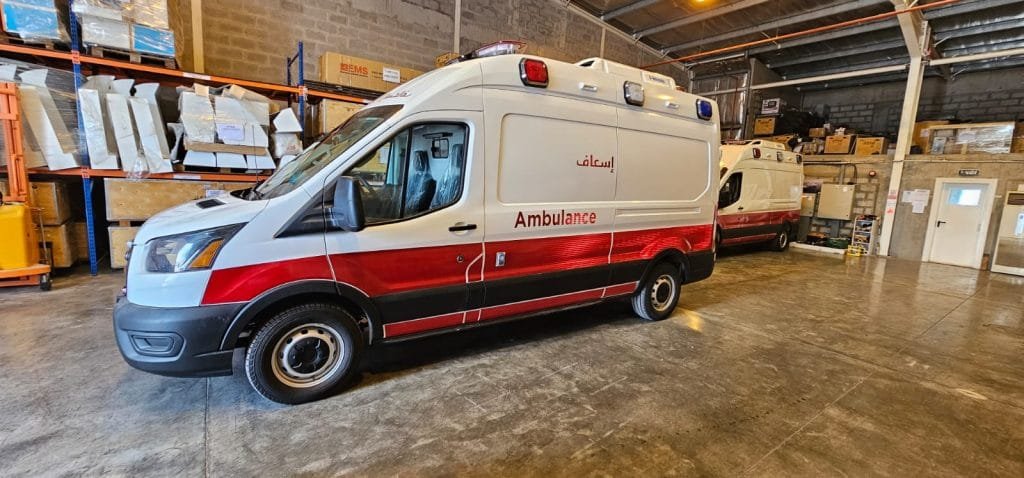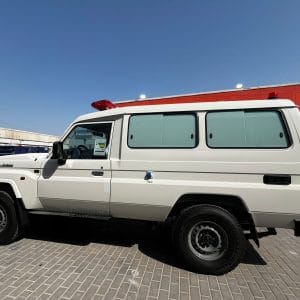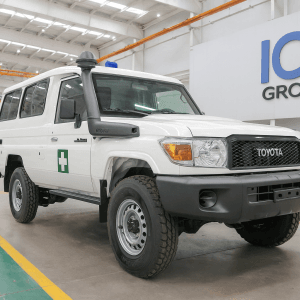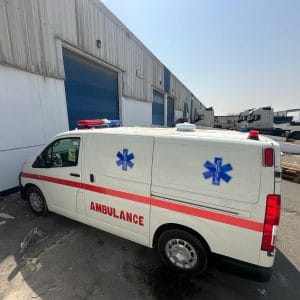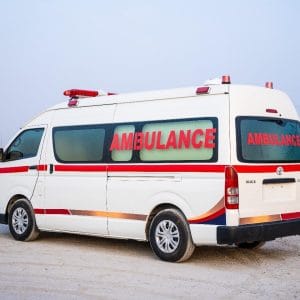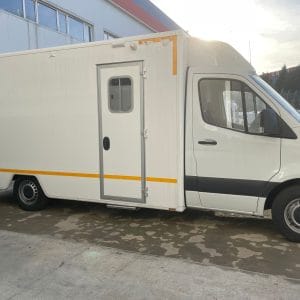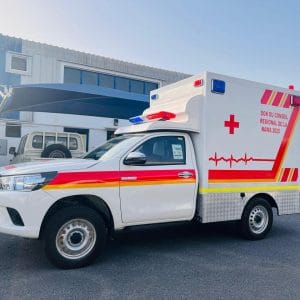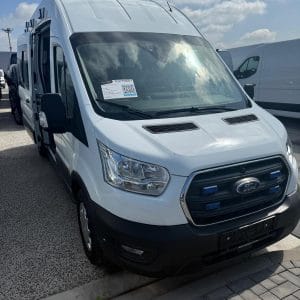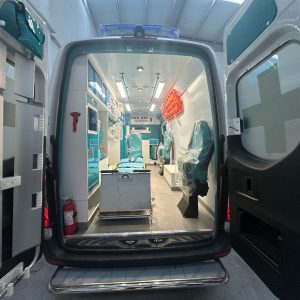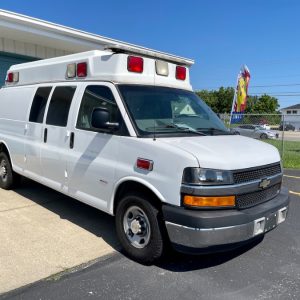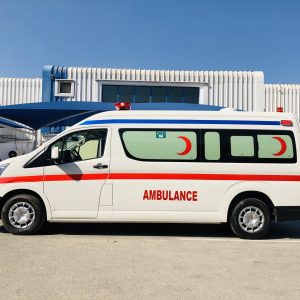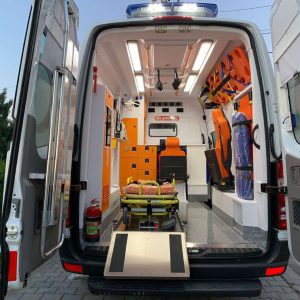EN1789 Certified Ford Transit Ambulance; In the high-stakes world of emergency medical services (EMS), every second counts. The vehicle that races to the scene is not merely a mode of transport; it is a mobile intensive care unit, a sanctuary of hope, and the first chapter of a patient’s survival story. At the heart of this critical response chain lies the ambulance itself. And when it comes to manufacturing these life-saving vehicles in a global hub like Dubai, one specification stands above all others: the Ford Transit EN1789 certification.
This isn’t just a badge on a chassis. It is a promise—a rigorous, internationally recognized promise of quality, safety, and performance. For governments, private healthcare providers, and humanitarian organizations sourcing ambulances from the Middle East, understanding the significance of an EN1789 certified Ford Transit is paramount.
This deep-dive blog post will explore why the combination of the Ford Transit platform and the exacting EN1789 standard, manufactured by a reputable Dubai-based company, represents the absolute pinnacle of ambulance design and functionality.
Part 1: De-Mystifying EN1789 – What Does This Certification Truly Mean?
Before we delve into the “how” and “why” of Dubai’s manufacturing prowess, we must first understand the “what.” The EN1789 standard is a specific European norm, formally known as EN 1789:2020 – Medical vehicles and their equipment – Road ambulances.
This comprehensive document outlines the minimum requirements for the design, testing, performance, and equipment of road ambulances. It is the benchmark that ensures an ambulance is fit for purpose, providing a safe environment for both patients and paramedics while enabling effective medical care during transport.
Key areas covered by the EN1789 standard include:
- Vehicle Construction and Integrity: The standard mandates specific criteria for the bodywork, including resistance to corrosion, the strength of the module-to-chassis connection, and overall structural integrity to withstand the rigors of emergency driving.
- Patient and Crew Safety: This is a cornerstone. EN1789 specifies requirements for crash safety, including the strength of occupant restraint points for stretchers and seats. It dictates the design of anti-slip floors, safe and accessible storage for heavy equipment, and the installation of grab handles to prevent falls during movement.
- Electrical Systems and Electromagnetic Compatibility: An ambulance is a rolling electronics lab. EN1789 ensures that the complex electrical system—powering everything from interior lighting and climate control to life-support devices—is safe, reliable, and isolated from the vehicle’s main electrical system to prevent interference. Crucially, it must be electromagnetically compatible, meaning medical devices like defibrillators and ventilators won’t malfunction due to electrical noise.
- Ventilation and Climate Control: The standard requires effective heating, ventilation, and air conditioning systems to maintain a safe and comfortable temperature for patients with varying medical conditions and for the crew working in stressful environments.
- Lighting and Acoustics: Both interior and exterior lighting are specified. Interior lights must be sufficient for medical procedures without causing patient discomfort, while exterior warning lights must meet visibility standards. The internal noise level is also regulated to allow for clear communication.
- Dimensions and Layout: EN1789 defines minimum dimensions for the working area, ensuring there is adequate space for paramedics to perform CPR, intubation, and other critical procedures while in transit.
In essence, an EN1789 certification is not something a manufacturer can self-declare. It requires independent verification and testing by a notified body. When you purchase an EN1789 certified ambulance, you are investing in a vehicle that has been scientifically and systematically engineered to save lives.
Part 2: The Ford Transit – The Unrivaled Platform for Modern Ambulances
Why the Ford Transit? In the world of light commercial vehicles, the Ford Transit has earned a legendary reputation for durability, reliability, and versatility. This makes it the ideal “canvas” upon which to build a certified ambulance.
- Proven Global Chassis: The Ford Transit is used by ambulance services worldwide, from the bustling streets of London to the vast highways of North America. Its chassis is engineered for heavy payloads and constant stop-start driving, which is the exact operational profile of an emergency vehicle.
- Power and Performance: With a range of powerful and efficient EcoBlue diesel and petrol engines, the Transit provides the necessary torque and acceleration for rapid response, even when fully loaded with medical equipment, personnel, and a patient.
- Reliability and Service Network: Ford’s global parts and service network is second to none. For an ambulance fleet operator, downtime is not an option. The ubiquity of the Transit means that mechanical support and parts are readily available, minimizing maintenance delays from Dubai to Dakar.
- Driver Ergonomics and Safety: Modern Transits feature advanced driver-assist technologies, comfortable cabins, and excellent visibility. A comfortable, alert driver is a safer driver, which is crucial for navigating traffic under high-pressure conditions.
A Dubai-based manufacturer specializing in EN1789 ambulances takes this already excellent platform and transforms it into a purpose-built medical fortress.
Part 3: The Dubai Manufacturing Advantage – A Synergy of Vision and Expertise
Dubai is not just a city; it’s a global nexus for trade, innovation, and high-quality manufacturing. Choosing an EN1789 certified Ford Transit ambulance manufacturer in Dubai offers a unique set of advantages.
1. Strategic Geographic Location:
Dubai serves as a bridge between East and West. Its world-class port and logistics infrastructure make it an ideal hub for exporting ambulances across the Middle East, Africa, Asia, and beyond. For international clients, shipping times and costs are significantly optimized compared to sourcing from Europe or North America.
2. Adherence to International Quality Standards:
Leading manufacturers in Dubai operate with a global mindset. Their production facilities often boast ISO 9001 (Quality Management) and ISO 14001 (Environmental Management) certifications. When combined with the EN1789 standard, this creates a culture of continuous improvement and meticulous attention to detail that is visible in every weld, wire, and finish of the final vehicle.
3. Customization and Flexibility:
While the EN1789 standard sets the minimum requirements, a top-tier Dubai manufacturer understands that different clients have different needs. Whether it’s a Type B (Patient Transport Ambulance), Type C (Mobile ICU/Emergency Ambulance), or a specialized configuration for neonatal care or bariatric patients, they possess the engineering expertise to customize the ambulance accordingly—all while maintaining full EN1789 compliance.
4. Access to Cutting-Edge Medical Technology:
The region is a rapidly growing market for advanced medical technology. Manufacturers in Dubai have direct access to and partnerships with leading global suppliers of medical devices, allowing them to integrate state-of-the-art equipment from the outset. This includes:
- Advanced Ventilators and Defibrillators: From basic transport ventilators to advanced ICU-grade models with comprehensive monitoring.
- Patient Monitoring Systems: Multi-parameter monitors that track ECG, SpO2, NIBP, EtCO2, and temperature.
- Powered Stretchers and Loading Systems: Systems that reduce physical strain on paramedics and enhance patient safety during loading/unloading.
- Telemedicine Capabilities: Integrating systems for real-time transmission of patient data to the receiving hospital.
5. Robust After-Sales Support:
A reputable manufacturer doesn’t disappear after the sale. They provide comprehensive after-sales support, including:
- Operator Training: Training for medical crews on the safe and efficient use of all vehicle systems and equipment.
- Technical Support and Maintenance: Offering service contracts, spare parts logistics, and remote diagnostic support.
- Warranty and Certification Upkeep: Ensuring that the vehicle remains compliant throughout its service life.
Part 4: A Glimpse Inside the EN1789 Certified Ford Transit Ambulance
Let’s take a virtual tour of a typical Type C (Mobile ICU) Ford Transit ambulance built to EN1789 standards by a Dubai manufacturer.
Exterior:
- A high-visibility livery compliant with local regulations.
- An advanced, energy-efficient LED warning light system (beacons, lightbars, side and front/rear scene lights).
- A robust external body built from composite materials or aluminum, offering excellent thermal and acoustic insulation.
- Safety features like a rear-view camera and proximity sensors.
Interior – The Crew Cabin:
- Ergonomic seating for driver and passenger, often with integrated seatbelt airbags.
- A central control panel for the electrical system, lighting, and climate control.
- A modern radio communication system and data terminal.
Interior – The Patient Module:
This is where the EN1789 standard truly comes to life.
- Layout: A logical, workflow-oriented layout with the primary stretcher positioned centrally, allowing access from both sides.
- Air Conditioning: A powerful, dual-zone HVAC system with separate controls for the driver and patient compartment.
- Electrical System: A 220V/110V inverter and a 12V DC system with intelligent battery management, ensuring medical devices can run for hours on battery power alone (“silent mode”).
- Storage: Ample, well-organized cabinets with secure, slam-lock doors. There are dedicated, shock-absorbent mounts for the oxygen cylinder, defibrillator, and ventilator.
- Lighting: A combination of bright, color-corrected main lights for procedures and subdued, indirect lighting for patient comfort.
- Workmanship: The finish is clinical, easy to clean, and durable. All edges are rounded, and the flooring is seamless and anti-slip.
Conclusion: More Than a Vehicle, It’s a Commitment to Life
In the complex equation of emergency medical response, the ambulance is a foundational variable. Opting for an EN1789 certified Ford Transit ambulance from a certified manufacturer in Dubai is not a simple procurement decision; it is a strategic investment in public health, crew safety, and operational excellence.
It represents a choice to embrace a globally recognized standard of safety. It leverages the unmatched reliability of a Ford Transit chassis. And it taps into the dynamic, quality-focused, and strategically located manufacturing ecosystem of Dubai.
When lives are on the line, compromise is not an option. By specifying an EN1789 certified ambulance, you are ensuring that the first link in the chain of survival is not just strong, but is forged to the highest possible standard. You are choosing a vehicle designed not just to transport patients, but to actively contribute to their survival and recovery from the moment the doors close at the scene to the moment they open at the hospital.
For fleet managers, government tenders, and private hospital groups looking to equip their EMS teams with the very best, the path is clear: partner with a Dubai-based manufacturer who has the expertise, the certification, and the unwavering commitment to build not just an ambulance, but a mobile testament to the power of world-class engineering and compassionate care.


